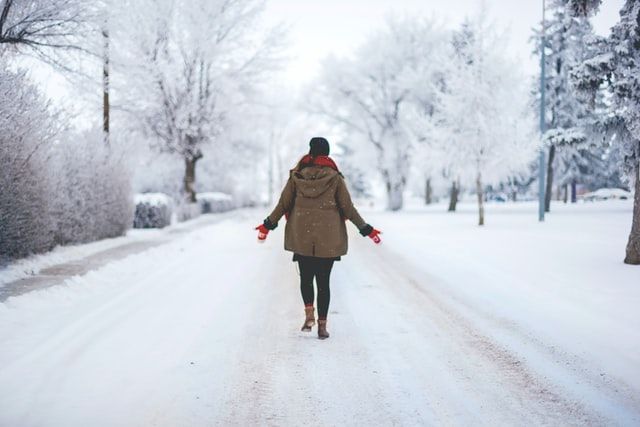
Winter Storm Safety
You may have nostalgia for the winter storms of your childhood. When you’re young, blizzards bring the promise of canceled school, warm cups of cocoa, and snowball fights. As an adult, however, the glamour of a snowstorm can wear off quickly. This is especially true when it comes to driving during a winter storm, weather proofing your home, and facing a winter weather emergency.
The winter season is already in full swing this year, and a number of states across the United States have begun facing extreme winter storms. Here’s what you need to know about staying safe during a winter storm, including preparedness tips. Being prepared for severe weather can help you mitigate problems and enjoy the inevitable winter wonderland as much as possible.
Driving Safely During Winter Storms
According to the American Red Cross, being able to stay safe on the road during a winter storm begins long before the storm strikes. Before the first winter storm, the Red Cross recommends winterizing your vehicle. This can lower your chances of getting stranded during severe weather.
Winterizing your vehicle may include getting a car mechanic to evaluate your battery, antifreeze level, windshield washer fluid, wipers, ignition, thermostat, exhaust system, heater, brakes, defroster, oil, and lights. A mechanic can also help you install winter tires that can help you keep traction on icy roads.
Another helpful tip from the Red Cross is to make sure that you always keep the gas tank full during the winter so that you have plenty of fuel whenever you need it and also to prevent the fuel line from getting frozen.
Once you’ve prepared your car, it’s time to prepare your emergency car safety kit. This winter-ready kit should include jumper cables, a windshield scraper, a small broom, a small sack of sand to help create traction under your wheels, tire chains or traction mats, matches, or a lighter (make sure these are in a place that is waterproof), a bright reflector cloth that you can tie to your antenna if you become stranded, warm clothing (including coats, gloves, boots, and blankets), water, and a ration of non-perishable food. It may also be helpful to include basic tools, such as scissors or a knife.
Weather Proofing Your Home for Winter
Another important way to prepare for winter is to weather proof your home. This means that you should take care to have your heating system checked and make sure that you have fully charged carbon monoxide detectors installed on every level of your home. Properly sealing and insulating your home can ensure that your efforts to heat your home aren’t going to waste.
You can protect your pipes from freezing by draining water from pools and sprinkler systems, and then draining and storing hoses. Close indoor valves that lead to outdoor hoses and make sure that all pipes are insulated. When the temperature drops, keep water running through the pipes to prevent freezing, and never set your thermostat to lower than 55 degrees Fahrenheit, even if you’re going out of town.
During a winter storm, it is vital to heat your home safely. This means using proper ventilation to avoid carbon monoxide poisoning. Whether you have a coal-burning stove, a wood-burning stove, an electric heater, or a kerosene heater, read the full instructions about how to properly install your equipment. You may want to keep an extra supply of fuel handy, too, in case of a long freeze.
Creating a Disaster Plan
You may never need it, but having a communication and disaster plan can help you fully prepare for the winter. Make sure that everyone in your household knows what to do during a severe storm, including where in the house to move to and who (and how) to contact people outside the home. Part of your disaster plan creation should include a toolkit or home kit. According to Ready.gov, the contents of a home kit should include what you need to safely stay in your home if the power is cut off for several days.
This home kit may include:
- Non-perishable food for every household member
- Pet food
- Medications
- Flashlight and radios
Make sure that your kit also includes extra batteries to power your devices in the event of a prolonged disturbance in power supply.
What to Do During a Winter Storm
If you’re expecting a storm to hit, or if you are already in the midst of a storm, it’s important to stay safe indoors and outdoors. Try to conserve heat, especially if you have a finite heat source like a wood-burning stove. According to the U.S. Centers for Disease Control and Prevention (CDC), you can also keep doors and windows closed in unused rooms of the house, and cover windows with blankets at night to better conserve heat. Make sure to bring your pets indoors, too.
How to Learn More About Winter Storm Safety
Staying safe during a winter storm includes preparing ahead of time and then following through on your preparedness plan. For more tips on winter storm safety, check out this helpful severe weather site from the CDC.
Research and materials for this article were compiled, written, and distributed on behalf of the National Public Health Information Coalition. The views and opinions expressed in this blog are those of the various authors and do not necessarily reflect the official policy or position of the National Public Health Information Coalition or its members.
Sources:
[1] Winter Storm Safety. https://www.redcross.org/get-help/how-to-prepare-for-emergencies/types-of-emergencies/winter-storm.html
[2] Frozen Pipes. https://www.redcross.org/get-help/how-to-prepare-for-emergencies/types-of-emergencies/winter-storm/frozen-pipes.html
[3] Winter Weather. https://www.ready.gov/winter-weather
[4] Stay Safe During & After a Winter Storm. https://www.cdc.gov/disasters/winter/duringstorm/indoorsafety.html

